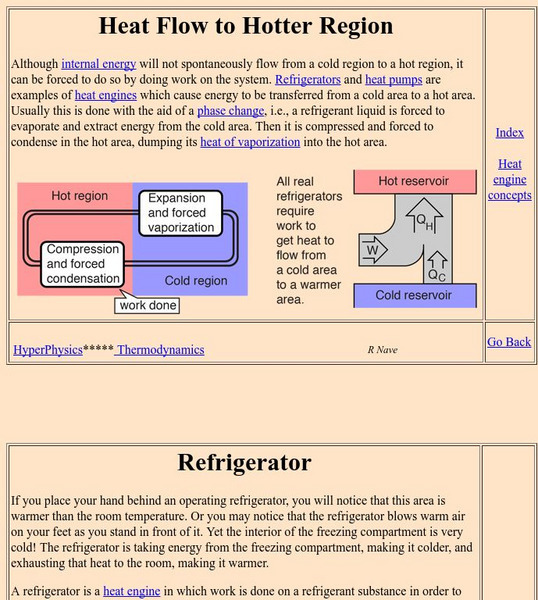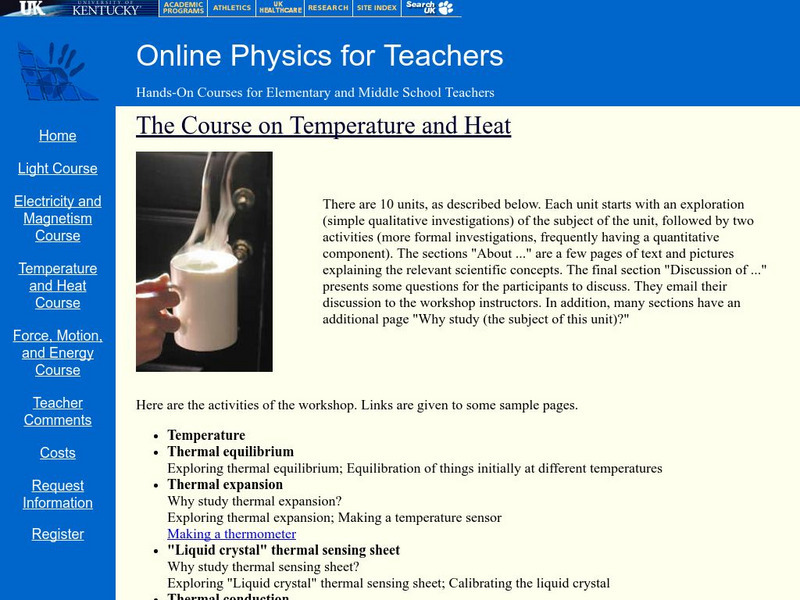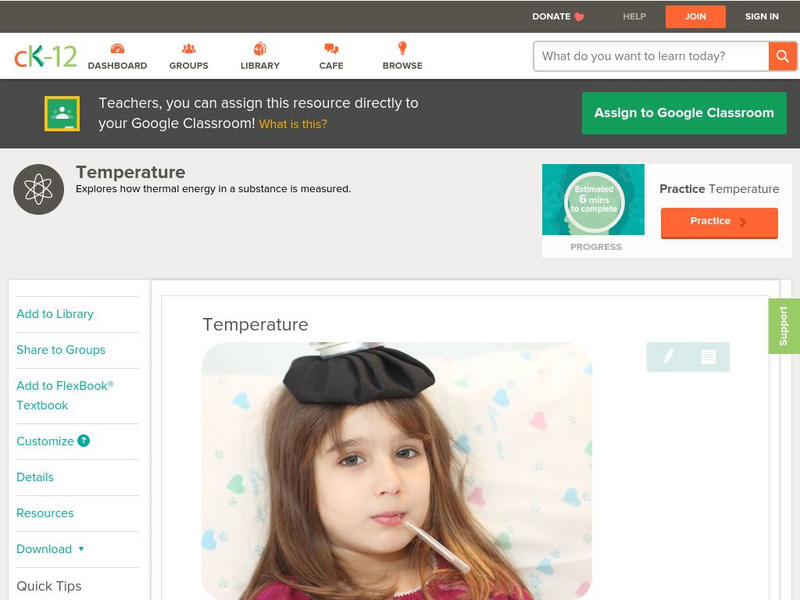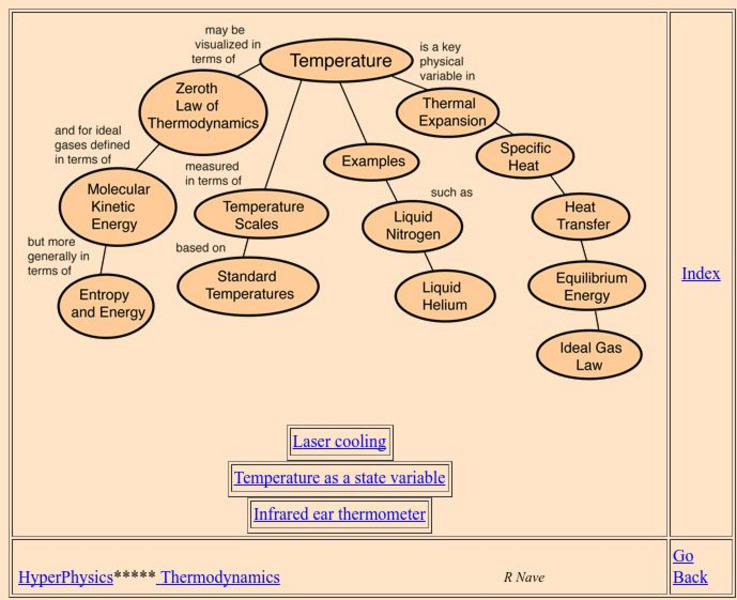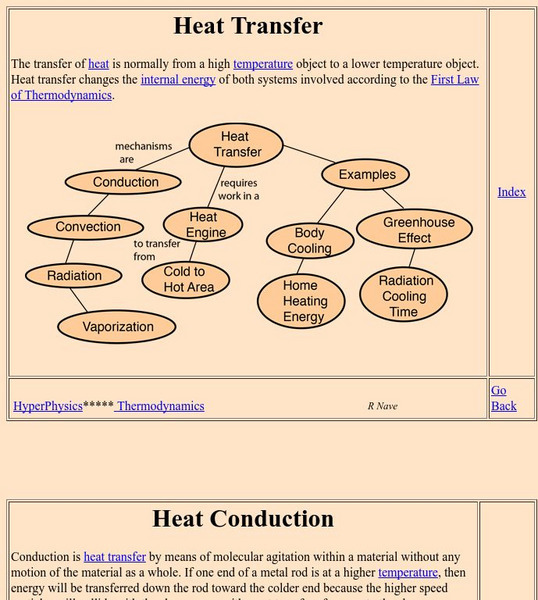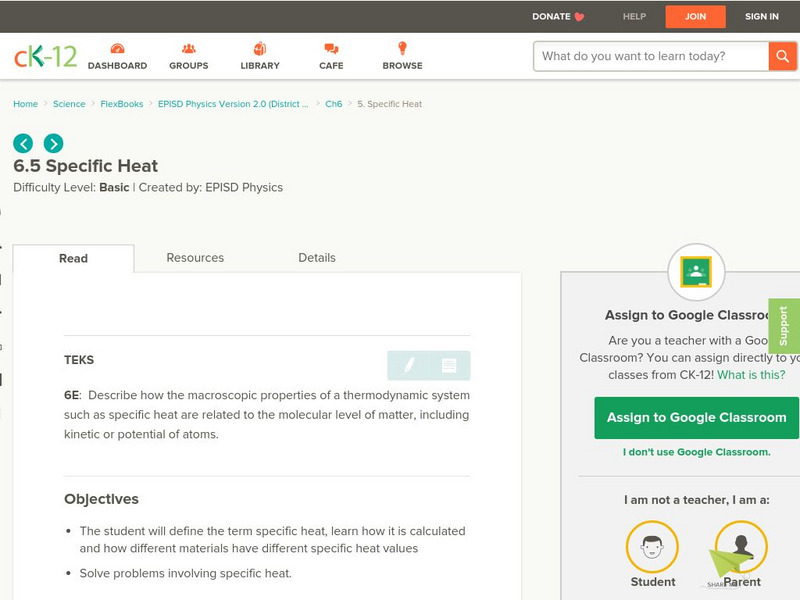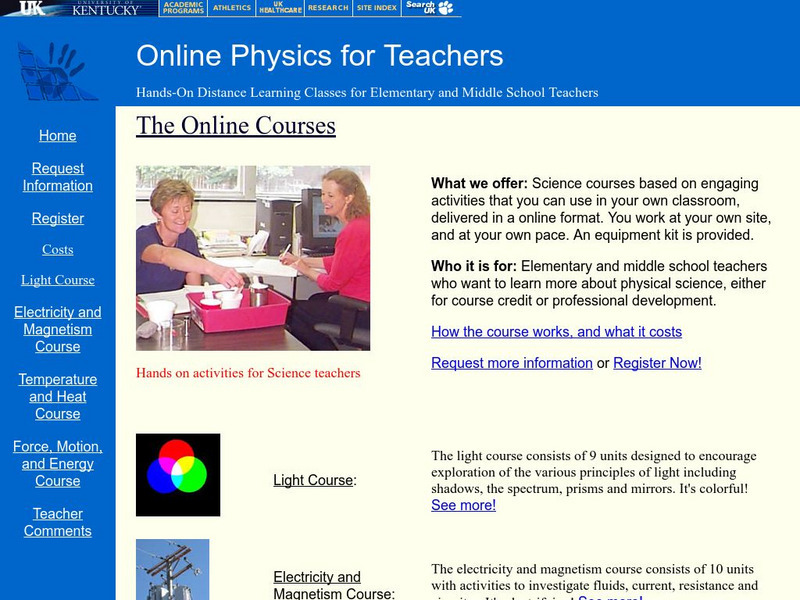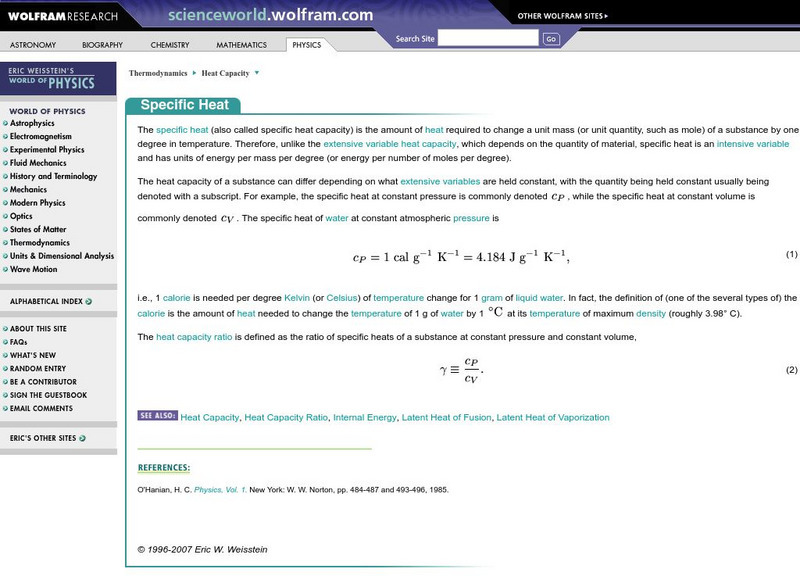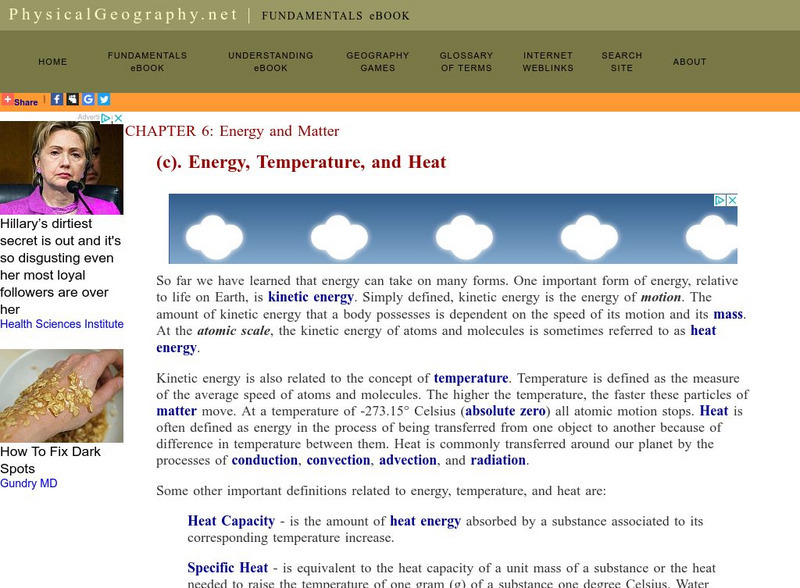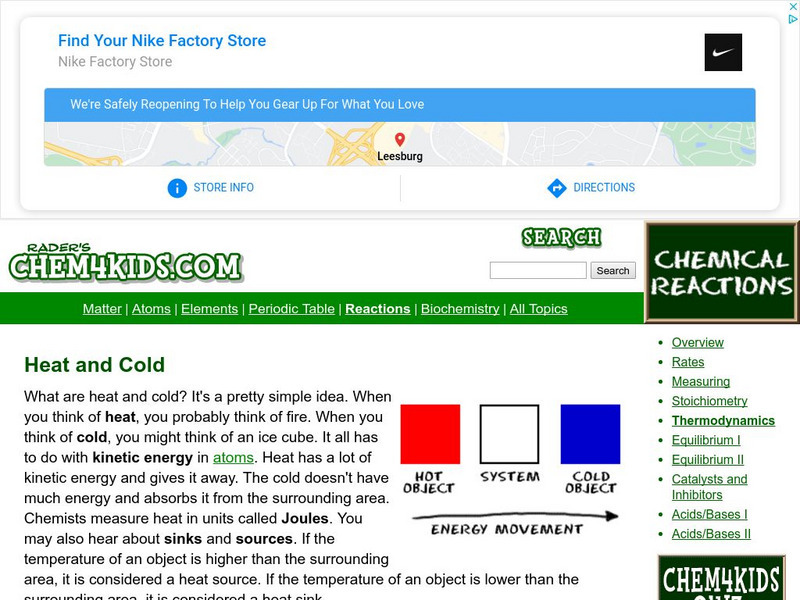Hi, what do you want to do?
Georgia State University
Georgia State University: Hyper Physics: Heat Engine Cycle
The heat engine cycle is defined and discussed. So pressure-volume diagrams are introduced and their use in depicting the cycles of a heat engine is demonstrated. Informative graphics are accompanied by reason-filled explanations.
Georgia State University
Georgia State University: Hyper Physics: Heat Flow to Hotter Region
Heat flow from a hot region to a cold region is described and explained. Applications of this phenomenon (specifically heat pumps and refrigerators) are discussed. Excellent graphics.
CK-12 Foundation
Ck 12: Chemistry Simulation: Camping Chemical and Physical Changes
[Free Registration/Login Required] Explore how heat and temperature relate to phase changes.
University of Kentucky
Virtual Workshop: The Course on Temperature and Heat
On line course on Temperature and Heat for graduate credit or professional development, that emphasize hands on activities you can use in your classroom.
Physics Classroom
The Physics Classroom: Thermal Physics: Temperature and Thermometers
Use this interactive tutorial to introduce students to the concepts of temperature and thermometers.
CK-12 Foundation
Ck 12: Physical Science: Temperature
[Free Registration/Login may be required to access all resource tools.] Definition of temperature, how it is measured and the three temperature scales.
Georgia State University
Georgia State University: Hyper Physics: Temperature Concepts
An indexing page which includes links to a wealth of pages detailing the conceptual meaning of temperature. A hypertext format allows the visitor to quickly gain access the desired information.
Physics Central
Physics Central: Physics in Your Glass: Racing Molecules
An easy experiment for demonstrating and exploring molecule movement requiring common household items: two glasses, two dark colors of food coloring, and warm and cold water. A few variations to the experiment will have students using...
Physics Classroom
The Physics Classroom: Thermal Physics: Thermometers as Speedometers
Through interactive exercises and illustrated tutorials, students answer the fundamental questions: What is the reading on a thermometer the reflection of? What does temperature measure?
Physics Classroom
The Physics Classroom: Thermal Physics
A two-lesson tutorial on thermal energy in the study of physics. Lessons include informational text, interactive activities, animations, and quick, interactive comprehension check-ins.
Georgia State University
Georgia State University: Hyper Physics: Heat Convection
Using understandable words and exceptional graphics, this page describes the transfer of energy by means of the convection process. Contains several links to related topics.
Georgia State University
Georgia State University: Hyper Physics: Heat of Fusion
The heat of fusion is defined and described. A graphical representation of the heat of vaporization is given. A method for measuring and calculating the heat of fusion is also presented and explained.
Physics Aviary
Physics Aviary: Practice Problems: Final Temperature of a System
Students must figure out the final temperature of a system when a hot object and a cold object are placed in a closed container.
CK-12 Foundation
Ck 12: Specific Heat
[Free Registration/Login may be required to access all resource tools.] Students explore the concept of specific heat, learn how it is calculated, and find out how different materials have different specific heat values.
University of Kentucky
University of Kentucky: Online Physics for Teachers
A set of four online courses in Physics for elementary and middle school teachers. Each course targets a different topic area - light, electricity & magnetism, temperature & heat, and force, motion, & energy.
Wolfram Research
Wolfram Science World: Specifiic Heat
This site has information on specific heat,the amount of heat required to change a unit mass of a substance by one degree in temperature. Included are many links and formulas.
Georgia State University
Georgia State University: Hyper Physics: Area Expansion
The concept of area expansion is presented and explained. An equation for calculating the amount of area expansion is provided.
University of Colorado
University of Colorado: Physics 2000: Temperature and Absolute Zero
Another awesome page from the Physics 2000 site. Entertaining, interactive, educational, understandable. Explains the meaning of temperature and absolute zero. Discusses the temperature scales. Requires Java.
Massachusetts Institute of Technology
Mit: Open Course Ware: Heat Transfer and Thermal Expansion
Students explore heat transfer and thermal expansion. Some topics examined in the activities are thermodynamic cycles, temperature scale, and bimetals. The resource consists of video clips, lecture notes, and exam questions with detailed...
Other
Fund. Of Phys. Geography/energy, Temperature, and Heat
A page describing (in part) the distinction between energy, temperature and heat. Includes a graphic illustrating the quantity of energy needed to transform water between various states. Methods of thermal energy transfer (convection,...
Chem4kids
Chem4 Kids: Thermochemistry
This site provides a general overview of thermochemistry, the division of chemistry that deals with temperature in chemical reactions. Content explores what heat and cold really are, the heat and energy around you, and a bit about Lord...
Georgia State University
Georgia State University: Hyper Physics: Heat Conduction
Using understandable words and exceptional graphics, this page describes the transfer of energy by means of conduction. Contains several links to related topics.
Physics Aviary
Physics Aviary: Ideal Engine Lab
This lab is designed to have students examine how the temperature of the heat source and the temperature of the coolant effect the efficiency of the ideal engine.
Physics Aviary
Physics Aviary: Practice Problems: Power From Temperature Data
This program asks students to determine the effective power of an appliance based on the temperature of the sample after different intervals of time. The appliance was not activated at time equals zero and students must determine the...






